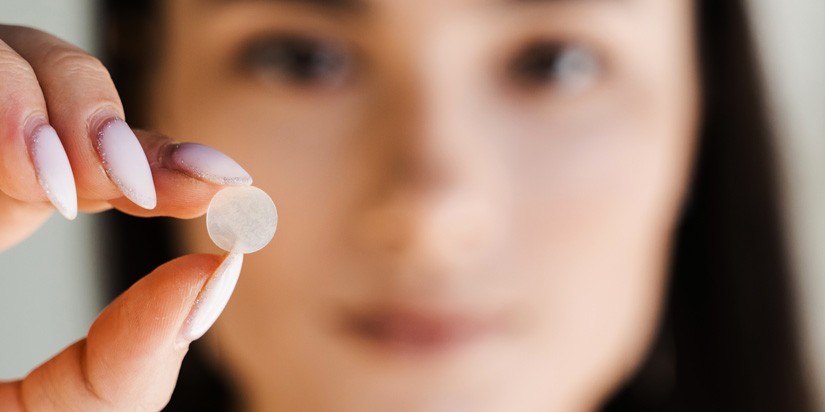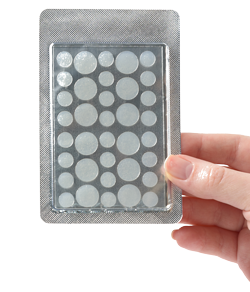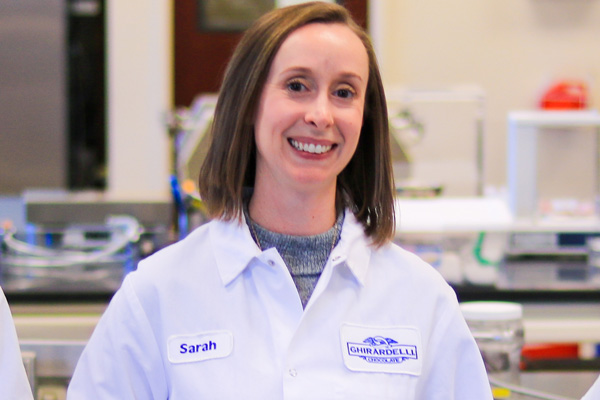
Pimples are common and often a teenager’s worst nightmare. Waking up to a conspicuous red spot on your face could not be more horrifying. So, what to do with these small, painful, discolored bumps with a thick, white-yellow fluid (pus) at the tip?
The Difference Between Acne and Pimples
Commonly known as spots or zits, pimples are a part of acne. The dreaded pimples surface because of hormone production changes during puberty. When hormones become active during puberty, sebaceous glands located at the base of hair follicles may become overstimulated. Sebaceous (oil) glands are microscopic glands found in your hair follicles that secrete sebum, an oily substance that protects your skin from drying out. Pimples form when dead skin cells mix with excess oil (sebum). This mixture plugs the pore, causing swelling. Bacteria can grow in the mix and lead to infection and pus. Pimples are most likely to occur during the teenage years and, for women, around menstruation.
The clearest way to distinguish between acne and pimples is to understand that pimples are a symptom of a condition, whereas acne is the condition itself, an inflammatory disorder of the skin. Someone who has acne-prone skin will experience pimples as a part of their condition; however, not everyone who gets the occasional pimple has acne-prone skin.
Pimple Patches
What do you do about pimples? You’re told not to pop, squeeze, or pick at the blemish. Popping a pimple delays the natural healing process. It can cause infection and scarring, and it may make the pimple more inflamed and noticeable. Fortunately, technology has a solution, and that solution is pimple patches. Pimple patches are also known as acne stickers.
A pimple patch is an adhesive sticker that you apply directly to a pimple and leave on for a stretch of time to reduce the breakout.
To use pimple patches, first clean and moisturize your face as normal. Then apply the sticker to your pimple and wear it overnight. You can keep it on while you shower, as it is waterproof, then wash your face as you would during your usual morning routine.
There are several brands of pimple patches, as well as ingredients used to treat the pimples themselves. A pimple patch is designed for one-time use since the capacity of agents to absorb oils is limited. The actual patch is disposable due to the biodegradable materials used in its production. One film of pimple patches typically consists of up to 15 patches.
Pimple patches can help pimples go away overnight. These spot treatments act as a bandage that prevents you from touching them and absorbs the fluid from the pimples, creating a moist environment for faster and improved healing. The patch won’t stop the next pimple from appearing, but the pimple can be fixed more quickly.

How the Patches Work
Chemically, how do the patches actually work? Pimple patches are commonly made of hydrocolloid, a gel-forming material originally used for healing wounds. Hydrocolloids are a heterogenous group of long-chain polymers that can be polysaccharides or proteins. Hydrocolloid just means a polymeric material that absorbs water to form a gel. The polymers used as hydrocolloids have a number of hydroxyl (-OH) groups that markedly increase their affinity for binding water.

The application of self-adhesive hydrocolloid dressings is most commonly associated with the treatment of chronic ulcerative conditions where an open wound develops on the skin from injury, poor circulation, or pressure sores. Hydrocolloid dressings may also offer benefits in the care of acute wounds of all types.
For the small wound on your face, the pimple patches are little dressings. Hydrocolloid dressings consist of a thick, self-adhesive layer of a gellable mass that is applied to a flexible polyurethane film. Hydrocolloid dressings are made up of two layers.
The inner lining is usually made of hydrocolloids such as carboxymeth-ylcellulose, gelatin or pectin with with many water-binding groups in the chemical structure. The water-attracting material draws out fluid from the wound. The tough, outer layer is usually polyurethane, a thin transparent material that is easy to peel off.
The outer layer keeps everything in place, as well as preventing the water from evaporating and drying out the wound. The wound heals faster, and the new skin that forms is supple rather than tight and stiff. It also protects the wound from rubbing and scratching on surfaces.
Patches that only contain hydrocolloid are known as nonmedicated patches.
“As the hydrocolloid gel adheres to the skin, it absorbs excess oil and dirt away from pimples,” said Hadley King, M.D., a board-certified dermatologist. Nonmedicated hydrocolloid patches may be worn for two to three days, as long as you change the patch every day.
The hydrocolloid dressings are available in many shapes and some also have an additional adhesive border to prevent leakage or sliding of the dressing over the wound. Adhesives are used to attach the patch to the face.
There are three types of adhesives: Acrylic, silicone, and hydrogel. Silicone or hydrogel make the most quality adhesive. It is important to use a high-quality adhesive, so it stays in one place and does not cause irritation to the skin.
The Active Ingredients in Patches
Some pimple patches are full of added acne-fighting ingredients, while others are just hydrocolloid gel patches.
“The patch, or set of ingredients that will work best, depends on your skin type,” said Orit Markowitz, M.D., a board-certified dermatologist and founder of Opti Skin in New York City.
Pimple patches may help decrease inflammation, meaning red swollen bumps that sit near the surface of the skin, or give you no results at all. Therefore, many experts believe that these patches work only on a specific type of pimple.
Here are some of the ingredients in pimple patches and how each may affect your skin:
w Salicylic acid: A beta hydroxy acid and popular acne-fighting ingredient in skin care and shampoo, salicylic acid can help unclog pores and remove excess sebum, or oil. Patches containing salicylic acid could be a good option for a fairly inflamed pimple, but they may irritate dryer, sensitive skin.
- Tea tree oil or tea tree extract: Similar to salicylic acid, “tea tree oil can be very drying,” said Dr. Markowitz, making it a great tool for drying out pimples, but potentially irritating for sensitive skin. Tea tree oil also kills bacteria and decreases inflammation and redness.
- Hyaluronic acid: When spread on pimple patches, this popular skin-care ingredient “helps to hydrate the skin, which helps to prevent drying from salicylic acid,” said King.
- Niacinamide: “Another great addition,” Dr. King said, to a pimple patch because it can “improve skin tone and texture, and it has stabilizing effects on the skin’s barrier function, which can help improve moisture retention.” Niacinamide is a version of vitamin B3 (niacin).
- Benzoyl peroxide: “Benzoyl peroxide is an antiseptic that’s been used to treat acne for decades; however, it is best to avoid it if you have experienced prior irritation to it,” said Marisa Grassick, M.D., a dermatologist at Medical Dermatology and Cosmetic Surgery (MDCS) in New York City. Benzoyl peroxide helps reduce breakouts by acting as an antiseptic, killing bacteria in and around the pimple.

Types of Patches
Use a hydrocolloid bandage if your pimple is raised or has visible pus, so it can drain the fluid and flatten the pimple.
“These patches are effective because they absorb excess fluid and have a vacuum-like effect that gets out any dirt and oil that could be causing a breakout,” said Debra Jaiman, M.D., a New York City dermatologist and the author of Skin Rules. “It then converts those impurities into a gel-like substance that sticks to the patch and is sealed away from the face.”
If your pimple is too wet, however, it can keep the bandage from adhering. If your pimple doesn’t have any fluid in it, a hydrocolloid patch won’t do much.
“Pimple patches that contain ingredients that help treat the breakout, like salicylic acid, might deliver some extra help to clear dirt and bacteria out of pores and speed clearing,” said Dr. Jaiman.
Another type of pimple patch is the microneedle patch. It has several tiny, fine spikes that help deliver the active ingredients deeper into the skin. The arrangement is relatively more effective due to better delivery of skin-care ingredients. The active ingredients are able to more easily reach the site allowing the skin cells to absorb them.
Types of Pimple Patches
Hydrocolloid
(nonmedicated)
Coated with gel-forming agents that help to form moistness around the problem area and draw excess oil and pus out of the pimple.
Useful for blemishes that have come to a head and are ready to pop.
Medicated
Infused with ingredients that have mild medical properties.
Targets bacteria and inflammation.
Microneedling
Equipped with several tiny, fine spikes that help deliver the active ingredients deeper into the skin.
Ideal for blind pimples, which are deep bumps that form under the skin. They can be nearly invisible, small, or large, red, and painful.
Popular and Efficient
According to Brendan Camp, M.D., a dermatologist at MDCS Dermatology, pimple patches are seeing a rise in popularity for several reasons, such as “the increase in COVID masking, or the result of excess acne-causing bacteria in the area of the face that lies underneath a standard face mask, that is, the nose, cheeks, and chin. In addition, the self-care movement has taken off as more people spend time at home and find ways to better themselves and their skin.”
Pimple patches are also convenient, replacing a thick lotion or gel over the pimples for a skin-colored patch and making the breakout less visible. The market for pimple patches was valued at $510 million in 2021, indicating their prevalent use and convenience.
All things considered, pimple patches are popular and efficient.

REFERENCES
Ensoul Medical Clinic, Singapore. Pimple Patches for Acne: How Effective Are Acne Stickers? 2023: https://ensoulclinic.com/pimple-patches-for-acne-how-effective-are-acne-stickers/ accessed August 2023]
Hydrocolloid: An Overview. ScienceDirect Topics, 2009: https://www.sciencedirect.com/topics/chemistry/hydrocolloid [accessed August 2023]
Hello Giggles. The Truth About How Those Trendy Acne Patches Really Work, according to Dermatologists, 2023: https://hellogiggles.com/how-acne-patches-work/ [accessed August 2023]
Hero Cosmetics. What Are Hydrocolloid Acne Patches and How Do They Work? Nov. 11, 2017: https://www.herocosmetics.us/blogs/news/what-are-hydrocolloid-acne-patches-and-how-do-they-work [accessed August 2023]
Wikipedia. Polyurethane, June 17, 2023: https://en.wikipedia.org/wiki/Polyurethane [accessed August 2023]
Sinrich, J. The Healthy. What Are Pimple Patches and Do They Work? April 6, 2021: https://www.thehealthy.com/skin-health/acne/what-are-pimple-patches/[accessed August 2023]
Saunders, N.; Colizza, C. NBC Select. Nine Best Pimple Patches to Heal Breakouts, according to Experts, Jan 15, 2021: https://www.nbcnews.com/select/shopping/best-pimple-patches-ncna1254463 [accessed August 2023]
Romanowski, P. Prospector. Formulating with Niacinamide, Nov. 2, 2022: https://www.ulprospector.com/knowledge/13816/pcc-formulating-with-niacinamide [accessed August 2023]




